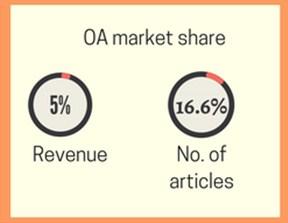OPEN ACCESS An Introduction to Open Access To advance innovations and collaborations in research, it is imperative that information and ideas are exchanged across all levels within the industry and academic community. With the advent of internet and emergence of digital storage, the access to the information has significantly improved.
Various initiatives and policies from research organizations, government bodies and funding associations have been the key drivers of this movement. Below are few milestones that have shaped the current OA landscape [2,3].
Open access (OA) refers to the digital online content (journal articles, reviews, conference proceedings, or monographs) that is free from paywall (subscription and/or licensing fees) and permission (copyright and/or licensing agreements) barriers. Since 1970s, OA movement has been instrumental in quick and easy dissemination of the scholarly information. The increasing relevance of open access journals is related to the steep rise in the cost of traditional journals, developments in technology and the desire for easier access and a wider audience for the scholarly work. According to the Association of Research Libraries (ARL), this “serials pricing crisis” led to an average price increase of 315% from 1989 to 2003. While technological advances facilitated the ‘access’ component of OA, much of the momentum in the mid-2000’s came from a period of punitively high increases in subscription fees – Increases that far outpaced the budgets for the libraries purchasing those subscriptions [1]. The OA approach is complementary to traditional publishing. It utilizes both new technological developments and their wide proliferation to ease the publication process for authors, and the availability of research material to society in general.
OPEN ACCESS Open access (OA) refers to the digital online content (journal articles, reviews, conference proceedings, or monographs) that is free from paywall and permission barriers.
4





